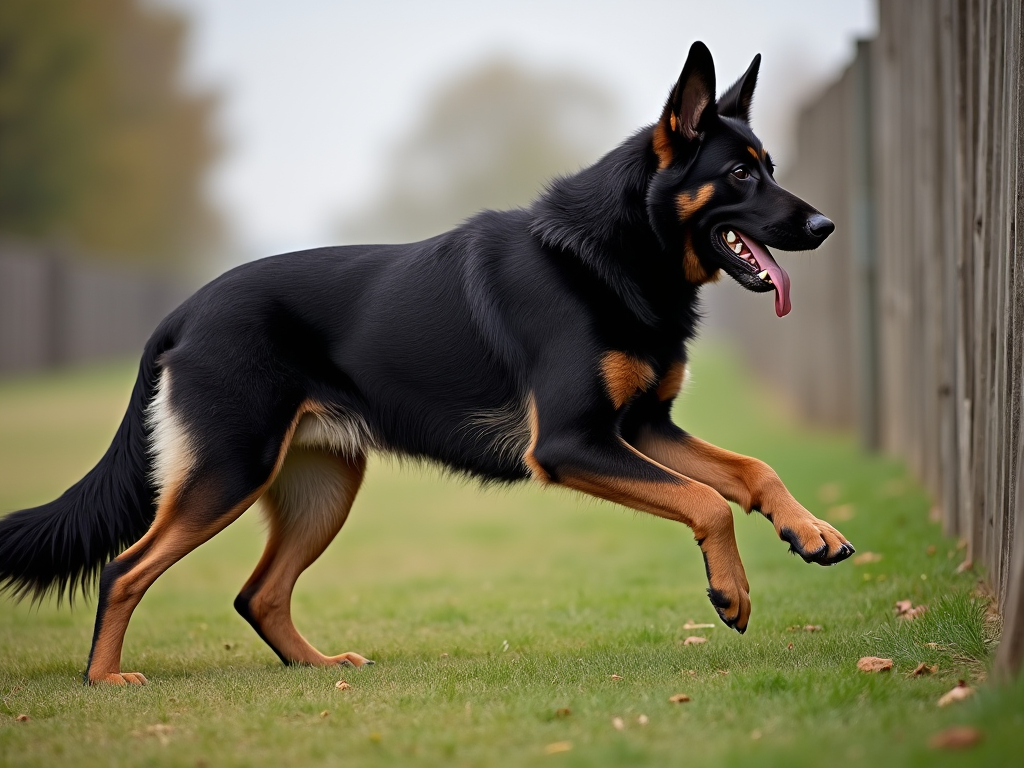Explore the key differences between working line and show line German Shepherds, including physical traits, temperament, and health considerations. Find out which is right for you!
As I watched my neighbor's sleek, black German Shepherd effortlessly scale a 6-foot fence during a training exercise, I couldn't help but marvel at its athleticism. Just moments later, I saw another German Shepherd strutting gracefully in a show ring on TV, its coat gleaming and posture regal. These two scenes perfectly encapsulate the fascinating divide between working line and show line German Shepherds.
The Fundamental Differences
Having owned both types of German Shepherds over the years, I've come to appreciate their unique qualities. Working line German Shepherds are like finely tuned athletes - all muscle, drive, and intensity. Show line German Shepherds, on the other hand, are the beauty queens of the breed - elegant, calm, and visually striking.
Physical Differences
Working line German Shepherds typically have:
- A straighter back
- More muscular build
- Denser, shorter coat
- Often darker colors like sable or black
Show line German Shepherds usually feature:
- A sloped back
- Larger, more angular body
- Longer, plusher coat
- Classic black and tan coloration
Temperament Variations
In my experience, working line GSDs tend to be:
- Highly energetic and driven
- Intensely focused on tasks
- More aloof with strangers
- Requiring constant mental and physical stimulation
Show line GSDs are generally:
- Calmer and more laid-back
- More sociable with people
- Easier to manage in a family setting
- Less demanding in terms of exercise needs

The Science Behind the Split
Research supports these observed differences. A study published in the journal "Applied Animal Behaviour Science" found that working line German Shepherds showed higher levels of prey drive and aggression compared to show lines. This aligns with their breeding purpose - working lines are bred for performance, while show lines are bred for conformation to breed standards.
Health Considerations
It's important to note that both lines can be prone to certain health issues, but in different ways:
- Working lines may be more susceptible to injuries due to their high-intensity activities.
- Show lines, particularly those with extreme sloped backs, can be prone to hip dysplasia and other structural issues.
A study in the "Veterinary Journal" found that 19.1% of German Shepherds suffer from hip dysplasia, with show lines showing a higher prevalence.
Choosing the Right Line for You
If you're considering adding a German Shepherd to your family, here are some tips to help you decide between working and show lines:
- Assess your lifestyle: Are you highly active or more laid-back?
- Consider your experience: Working lines often require more experienced handlers.
- Evaluate your living situation: Do you have space for a high-energy dog?
- Think about your goals: Do you want a working partner or a family companion?
The Role of Responsible Breeding
One organization playing a crucial role in maintaining breed standards is the German Shepherd Dog Club of America (GSDCA). They emphasize the importance of responsible breeding practices for both working and show lines, aiming to preserve the breed's versatility and health.
Conclusion: Two Sides of the Same Coin
As I reflect on my experiences with both lines, I'm reminded of that day I saw the working line scaling the fence and the show line in the ring. While they may look and act differently, both embody the intelligence, loyalty, and versatility that make German Shepherds such beloved companions. Whether you choose a working line or show line GSD, you're getting a remarkable dog - just be sure to choose the one that best fits your lifestyle and expectations.
